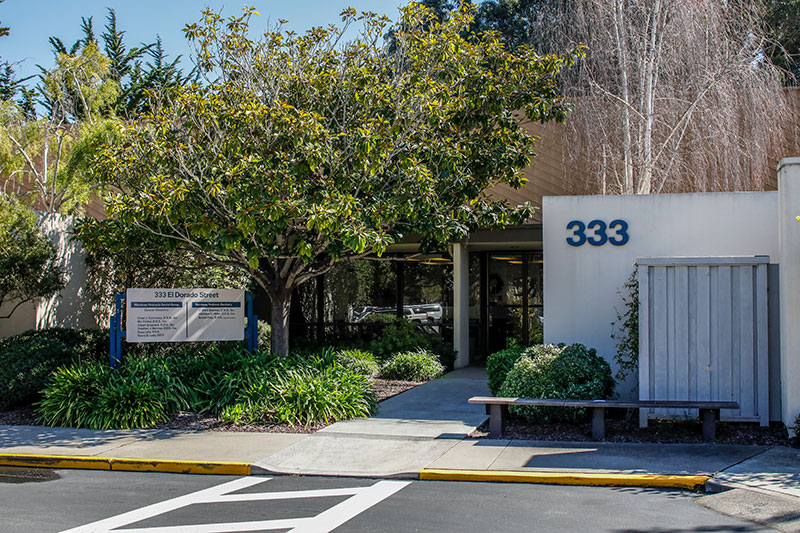What Are The Symptoms of Dry Socket?
If you’ve ever been around anyone who has had a tooth extracted, you have no doubt heard the phrase “dry socket”. The condition, also known as alveolar osteitis, sometimes happens when a patient has one of their permanent adult teeth extracted via dental procedure. It is the most common complication following a dental extraction.
If a tooth extraction is in your future, it’s important to be informed and aware of what a dry socket is, what the symptoms are, and what to do if the condition does occur.
The goal of any tooth extraction is to perform the surgery with minimal pain and discomfort. Once the tooth is removed, it’s expected that a blood clot will form at the extraction site. That clot works to protect the underlying bone and the nerves within the now-empty socket. The clot eventually helps the patient’s body form soft tissue over the tooth socket, and promotes growth of new bone beneath the soft tissue.
However, there are times when that blood clot fails to develop, or gets dislodged before the extraction site has a chance to heal properly, and that’s when dry socket can begin.
What is dry socket?
When that blood clot fails to protect the exposed bone and nerve endings left behind following an extraction, a dry socket begins to form. The socket becomes inflamed, and intense pain begins to develop typically within one to three days following the tooth extraction. That pain isn’t usually limited to just the socket, but also along the side of a patient’s face as the irritated nerves begin to react. As food debris and other irritants enter the socket, the pain typically grows.
Unfortunately, typical pain medications available over the counter are usually not capable of relieving the pain of a dry socket. If patients begin to suffer pain at the extraction site or are concerned dry socket may be developing, it is important to contact their MPDG dentist to determine if they need to come in and be seen.
What are the symptoms of dry socket?
There are multiple symptoms of a dry socket, and those include, but are not limited to, the following:
- Intense pain radiating from the extraction site within a few days following the removal of the tooth
- The loss of the blood clot in the empty socket, which can usually be confirmed visually and sometimes includes visible bone
- Pain that extends from the socket along the side of the face and possibly to the temple and around the side of the neck
- An unpleasant taste in the mouth, often accompanied by bad breath or an undesirable odor emanating from the mouth
How can you prevent dry socket?
It’s important to follow all your dentist’s instructions for home care after a tooth extraction. Patients are cautioned against several things that can lead to the blood clot either not forming well or becoming dislodged or broken up.
When you first resume eating and drinking, avoid the extraction site by chewing on the other side of your mouth, and stick to soft foods only. Staying hydrated is important after dental surgery, but avoid using straws or allowing liquid to slosh around the extraction site. Any kind of sucking or swishing movement in your mouth can dislodge the clot and lead to dry socket.
Avoid sugary, caffeinated and alcoholic beverages while your mouth is healing, and most importantly, avoid any kind of tobacco use. Tobacco use is the main cause of dry socket, because it prevents good clotting and introduces bacteria into the mouth, along with slowing your body’s natural healing processes. The inhalation and exhalation of smoking a cigarette or other tobacco product, or chewing tobacco, also can disturb the blood clot and pull it out of place.
Follow the aftercare instructions for dental hygiene closely to help prevent dry socket. These include avoiding the area with toothbrush, floss or mouthwash for the first 48 hours after an extraction, and refraining from brushing for several days. Instead, you can rinse your mouth gently by tilting your head back and forth, using lukewarm saltwater or an antibacterial mouthwash. Be careful not to disturb the area until a good clot forms in the socket and your healing is well underway.
If you have any questions after a tooth extraction or concerns for your MPDG dentist to address, contact our offices anytime.
See what our happy patients are saying:
Jennifer S.
I so appreciate the service I receive when I go to Dr. Lehr's Office for my checkups. I think the practice as a whole is much improved by technology and process improvements.
Annette F.
I am very grateful to have the fine dental care by Dr. Stephen Ikemiya. He and his hygienist keep me feeling that my teeth are well cared for. As a senior citizen, 80, I appreciate this.
Robert W.
I have tried several dentists over years , but, none would compare to team of Ryan Lehr's (D.D.S) office. I would highly recommend you trying them out, you will come away from your visit with a feeling of having found the "Right Team"!






